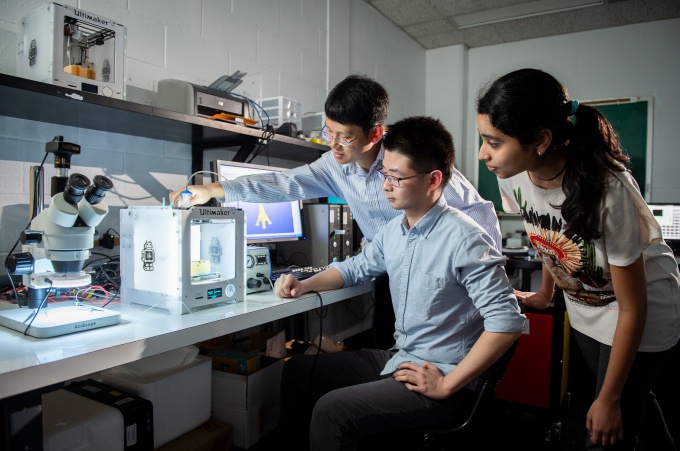Advanced Manufacturing and Sustainable Manufacturing Design
Research addresses critical challenges in new additive manufacturing processes, human-automation interaction, biomedical materials and manufacturing, and optimizing design for sustainability and re-manufacture/reuse.

Sponsors include the National Science Foundation, National Institutes of Health and private industry.
Affiliated Faculty
Selected Research Topics
Novel Additive Manufacturing Processes
Additive Manufacturing (AM) is widely recognized as a disruptive manufacturing technology for a wide variety of applications such as aerospace, defense, biomedical and consumer products. Research activities are designed to address challenges in AM including as poor surface quality, low precision, high cost, and weak material properties,.
Multi-functional Products Manufacturing
The interdisciplinary research activities include modeling, optimization, simulation tools to develop innovative design structures such as light weight and functionally gradient structures and smart multifunctional designs fabricated from conductive material, self-sensing material, piezoelectric materials, and nano materials.
Biomedical Engineering
This research applies advanced additive manufacturing technologies to different area of biomedical engineering including advanced 3D scanning and 3D printing technologies used for in-situ wound healing, and tissue engineering and regeneration.
Sustainable Manufacturing
Research projects improve manufacturing strategies to reduce the environmental impact, as well as the economic performance of manufacturing operations based on a fundamental rethinking of the structure and the business framework in manufacturing systems. Decision Analysis methods and alternative selection techniques are used to promote the concept of sustainability in which the best solutions are fully address economic, environment and social requirements.
Remanufacturing and Products End-of-Use Recovery
Research focusses on the efficient management of end-of-life products, especially electronic products through the use of simulation and optimization to study the impact of product obsolescence on end-of-life recovery profitability and environmental impact.
Engineering Design
Research projects in this area cover a variety of topics including: 1) expanding design theory and methodologies, 2) consumer preference modeling 3) market demand estimation of a given design alternative, 4) lifecycle impact of energy efficient and green design features, 5) design for several life cycles, 6) design for product end-of-use recovery, and 7) the role of heuristics and cognitive errors in design-related decision making. Optimization models, predictive modeling techniques, data analytic and simulation methods are common tools used in this area.